Spotlight on Year 4 - The Importance of Using Manipulatives in Maths
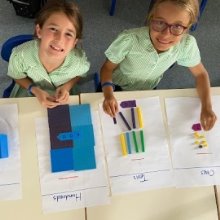
 Since ancient times, people of many different civilizations have used physical objects to help them solve everyday maths problems. The ancient civilizations of Southwest Asia used counting boards. The ancient Romans created the world’s first abacus. The Chinese abacus may have been an adaptation of the Roman abacus. The Mayans and the Aztecs both had counting devices that used corn kernels strung on string or wires that were stretched across a wooden frame. However, the 1800s saw the invention of the first true manipulatives - manoeuvrable objects that appeal to several different senses and are specifically designed for teaching mathematical concepts. Since the early 1900s, manipulatives have come to be considered essential in teaching mathematics at the Primary school level. In fact, for decades, many teaching bodies have recommended the use of manipulatives in teaching mathematical concepts to all age groups.
Since ancient times, people of many different civilizations have used physical objects to help them solve everyday maths problems. The ancient civilizations of Southwest Asia used counting boards. The ancient Romans created the world’s first abacus. The Chinese abacus may have been an adaptation of the Roman abacus. The Mayans and the Aztecs both had counting devices that used corn kernels strung on string or wires that were stretched across a wooden frame. However, the 1800s saw the invention of the first true manipulatives - manoeuvrable objects that appeal to several different senses and are specifically designed for teaching mathematical concepts. Since the early 1900s, manipulatives have come to be considered essential in teaching mathematics at the Primary school level. In fact, for decades, many teaching bodies have recommended the use of manipulatives in teaching mathematical concepts to all age groups.
In Key Stage 2, we have been focusing on ensuring we use the CPA approach when planning and teaching mathematics.
Concrete Stage A mathematical concept is introduced with manipulatives; students explore the concept using the manipulatives in purposeful activity.
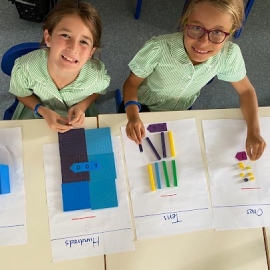
Pictorial Stage A mathematical concept is represented using pictures to stand for the concrete objects (the manipulatives). Students demonstrate how they can both visualise and communicate the concept as a picture.
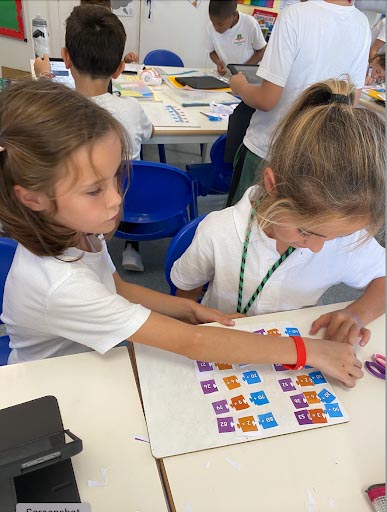
Abstract Stage Mathematical symbols (numerals, operation signs, etc.) are used to express the concept in symbolic language; students demonstrate their understanding of the mathematical concept using the language of mathematics.
This approach allows the children to pass through all the stages of learning, fully embedding the learning concept until Maths Mastery or fluency is achieved. Children should then be able to apply a specific maths skill in an unknown situation to help them solve the problem.
Research from both learning theory and classroom studies shows that using manipulatives to help teach maths can positively affect children’s learning. This is true for children at all levels and of all abilities. It is also true for almost every topic covered in the Primary school curriculum. Papert (1980) calls manipulatives “objects to think with.” Incorporating manipulatives into mathematics lessons in meaningful ways helps students grasp concepts with greater ease, making teaching the most effective it can be.
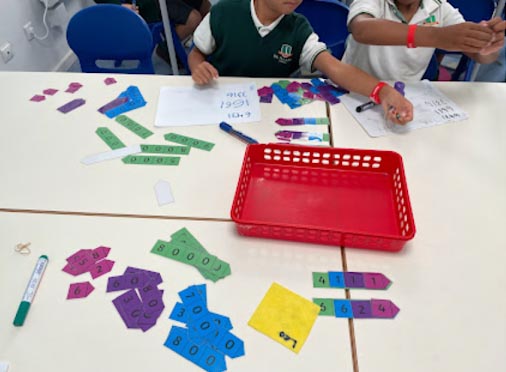
Year 4 has been busy putting all this theory into practice as they work through their learning objectives linked to place value.
Sally Homer
Year 3 and 4 phase leader



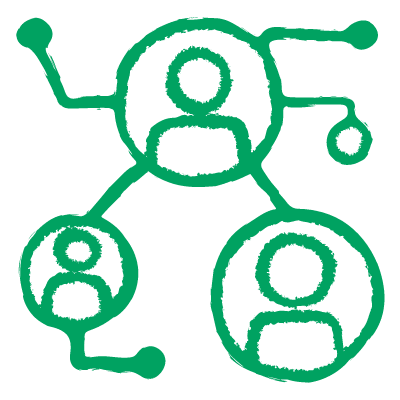














.png&command_2=resize&height_2=85)










